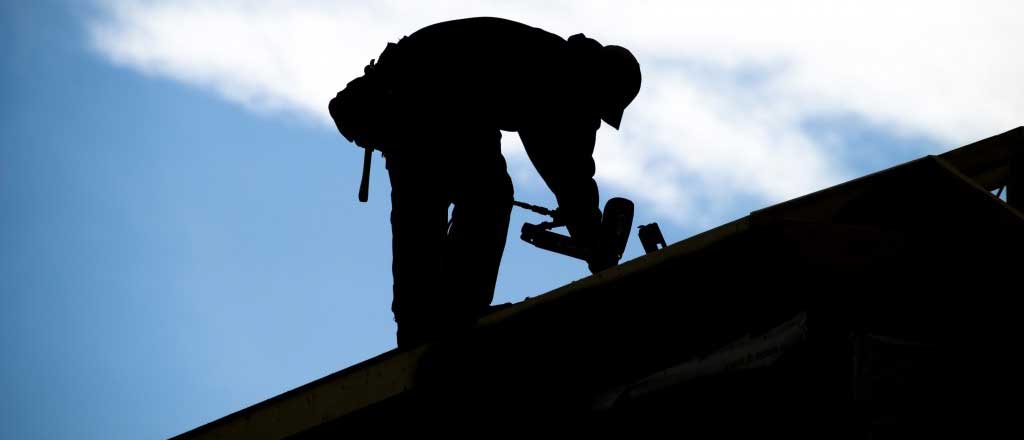
Roof system types
Roof systems and materials generally are divided into generic classifications: low slope and steep slope. Low slope roofing includes water impermeable, or weatherproof, types of roof membranes installed on slopes less than or equal to 3:12 (14 degrees). Steep slope roofing includes water shedding types of roof coverings installed on slopes exceeding 3:12 (14 degrees).
Low-slope roofing
There are five generic classifications of low slope roof membranes or systems. Click on a roof system for more information.
- Built-up roof (BUR) membranes
- Metal panel roof systems for low-slope applications
- Polymer-modified bitumen sheet membranes
- Single-ply membranes
- Thermoplastic membranes (e.g., PVC, TPO)
- Thermoset membranes (e.g., EPDM)
- Spray polyurethane foam-based (SPF) roof systems
Most low-slope roof membranes have three principal components:
- Weatherproofing layer or layers — the weatherproofing component is the most important element because it keeps water from entering a roof assembly.
- Reinforcement — reinforcement adds strength, puncture resistance and dimensional stability to a membrane.
- Surfacing — surfacing is the component that protects the weatherproofing and reinforcement from sunlight and weather. Some surfacings provide other benefits such as increased fire resistance, improved traffic and hail resistance, and increased solar reflectivity.
With some roof membranes, a component may perform more than one function.
Steep-slope roofing
There are six generic classifications of steep slope roof coverings. Click on a roof covering type for more information.
- Asphalt shingles
- Clay tile and concrete tile
- Metal roof systems for steep-slope applications
- Slate
- Wood shakes and wood shingles
- Synthetic
Steep-slope roof systems typically are composed of individual pieces or components installed in shingle fashion. Steep-slope roof assemblies typically consist of three primary parts:
- Roof deck — a roof deck is the structural substrate and usually is a wood-based material such as plywood or oriented strand board (OSB).
- Underlayment — underlayment provides temporary protection until a roof covering is installed and provides a secondary weatherproofing barrier. Sometimes underlayment is referred to as “felt” or “paper.”
- Roof covering — the roof covering is the external water shedding material.